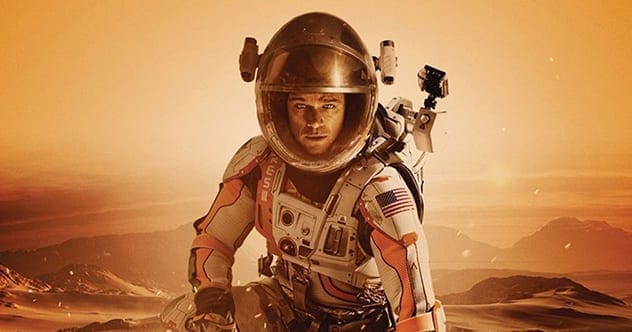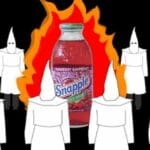We all know there’s a strong connection between great movies and books. Writing, whether it’s a screenplay or a novel, is key to successful storytelling, no matter how the story is told.
Comparing movies to the books they’re based on is common, but it’s tricky. Movies and books are different, and how we see them is personal. This list isn’t about comparing but revealing. Besides obvious ones like Harry Potter and The Lord of the Rings, many great movies come from books that you might not know. Let’s dive in!
10 Die Hard (1988)
Die Hard is a classic action movie that still holds up today. It introduced us to John McClane, the tough NYPD detective played by Bruce Willis. Many know the movie and its sequels, but few know it’s based on Roderick Thorpe’s 1979 book, Nothing Lasts Forever.
Both the movie and book share a similar story: a detective gets caught up in a hostage situation and has to handle it alone. However, there are differences. In the book, the main character is older and more overwhelmed, while the movie’s McClane is a youthful, confident action hero.
The book was actually a sequel to Thorpe’s 1966 novel, The Detective, which was also made into a film starring Frank Sinatra. Imagine a 79-year-old Sinatra instead of a 33-year-old Willis in Nakatomi Plaza!
9 Fight Club (1999)
Fight Club, based on Chuck Palahniuk’s 1996 novel, is one of Brad Pitt’s best performances. The movie still has a large cult following.
Jim Uhl’s screenplay stays true to the book, and both complement each other. The film brought fame to Palahniuk’s story. The story is about a man’s descent into madness and his battle with his split-personality self.
The book delves into the characters more deeply, and the ending is darker than the movie. Still, both are great examples of writing and filmmaking.
8 Shrek (2001)
DreamWorks’ classic animated movie, Shrek, is based on a book! William Steig’s 1990 children’s book, also called Shrek, introduced us to the green ogre.
Both the movie and book follow a grumpy ogre who leaves his swamp and becomes a hero. The movie and its sequels expand on this concept with voice acting from stars like Mike Myers, Eddie Murphy, and Cameron Diaz, making it one of the greatest animated movies.
Steven Spielberg almost got the rights to the book shortly after it was published; luckily, DreamWorks got them four years later.
7 The Devil’s Advocate (1997)
In The Devil’s Advocate, trial attorney Kevin Lomax, played by Keanu Reeves, moves to New York City for a job that’s too good to be true. His new boss is Satan himself! Al Pacino’s vivid portrayal of the devil steals the show, but the movie is based on Andrew Neiderman’s novel of the same name.
The film and book have different endings, but both are shocking. The core concept is how easy it is to compromise your morals for fame and fortune.
Lomax’s moral descent is reflected in the color of his courtroom suits. As the film progresses, his suits get darker, until he wears a completely black suit, just like his soul.
6 Christmas With The Kranks (2004)
This festive comedy with Tim Allen and Jamie-Lee Curtis is based on a book by John Grisham, famous for legal thrillers. His 2001 book, Skipping Christmas, isn’t a legal thriller but gained attention because of its film adaptation, Christmas with the Kranks.
The story is about Nora and Luther Krank, known for their Christmas spirit, who decide to skip the holidays one year for a Caribbean cruise. When their daughter changes her plans and comes home, they rush to get everything ready.
Both the book and movie are lighthearted looks at family dynamics and the commercialization of Christmas, intended as festive fun.
5 Primal Fear (1996)
William Diehl’s 1993 novel, Primal Fear, is a stunning legal thriller with believable characters, a rollercoaster plot, and a surprising twist. It seems logical that a film version would follow and stay true to the source material.
The 1996 film stars Richard Gere as attorney Marty Vail, who represents Aaron Stampler, accused of murdering an archbishop. The film is enjoyable in its own right.
The story shows the workings of a criminal trial and the moral dilemmas faced by defense lawyers. Edward Norton’s portrayal of Stampler, in his big-screen debut, proves his amazing acting ability.
4 Reservation Road (2007)
Reservation Road tells a heartbreaking and intriguing story from John Burnam Shwartz’s novel. Ethan Learner seeks the hit-and-run driver who killed his son by enlisting the help of the responsible man.
Joaquin Pheonix and Mark Ruffalo portray the lead characters, but the emotional turmoil doesn’t always translate well on screen.
The movie captures the key elements of the story. Shwartz’s gripping novel was always going to be hard to replicate in movie form.
3 American Psycho (2000)
American Psycho has gained cult status since its release. The movie features the gruesome account of an investment banker who rapes and tortures women, based on Bret Easton’s 1991 novel.
Easton received hate mail and death threats after the novel’s release. The protagonist, Patrick Bateman, is brought to life by Christian Bale in the movie. Easton later admitted the book was a personal reflection.
Considered one of the best horror movies, much of the novel’s graphic content made it into the film, which was written and directed by women and is now claimed as a feminist work.
2 The Martian (2015)
The Martian thrilled sci-fi fans upon its 2015 release, grossing over $600 million worldwide. The movie was always destined to be a success with Matt Damon in the lead role, Ridley Scott as director, and a fascinating plot.
This can be attributed to Andy Weir’s novel, The Martian. Weir created a fictional tale with an accurate scientific basis, making astronaut Mark Watney’s survival on Mars believable.
The movie kept the story intact, resulting in a Golden-Globe winning blockbuster. Weir’s follow-up novel, Artemis, will likely become a movie soon.
1 Apocalypse Now (1979)
Apocalypse Now is a defining moment in filmmaking history. The film is based on Joseph Conrad’s Heart of Darkness, published 77 years earlier.
The movie is set during the Vietnam War, while the book is set in the Congo. Both share the same plot: soldiers are sent to locate and eliminate a renegade colonel named Walter Kurtz.
The movie accurately portrays the harsh realities of war and their effects on soldiers. The similarities are significant and surprising, proving the film was heavily influenced by Conrad’s work.
Did any of these surprise you? Leave your comment below!










